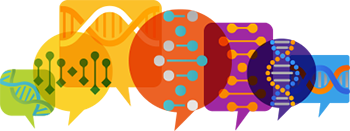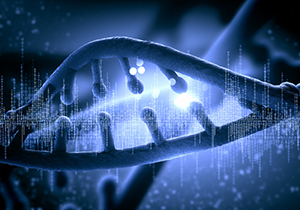
Claritas Genomics combines physician experience with next-generation sequencing and WuXi NextCODE’s analytics to accelerate rare disease diagnosis.
It’s one of the most heartbreaking and frustrating things for parents and pediatricians. When a child presents with a constellation of symptoms that doesn’t point to a known disease, what do you do?
Typically, these kids undergo a battery of tests, some of which will eventually be for single genes suspected to play a role in their health problems. But what if those tests come up negative? That leaves the families and doctors wringing their hands as they wonder what to do next.
That was the case with a patient at Boston Children’s Hospital (BCH). He was a boy who, at six months, wasn’t sitting up, smiling, or doing most of the things babies his age typically do. Instead, he seemed “rigid” to his mom, and then he developed a severe respiratory virus and was hospitalized. He also had repeated seizures and eventually needed a tracheotomy—a tube placed through an incision in his throat to help him breath.
Usually, such kids then begin going through what is known as a “diagnostic odyssey”—a long and arduous journey from doctor to doctor and lab to lab.
BCH doctors are trying a new approach. In 2013, the hospital spun out Claritas Genomics, a specialized genetics diagnostics business that combines the experience of the hospital’s physicians with the power of next-generation sequencing and WuXi NextCODE’s advanced analytics. Timothy Yu, a neurologist and researcher at BCH, helped found Claritas to provide a more holistic approach to rare disease.
WuXi NextCODE’s advanced analytics play a key role in improving the speed and efficiency of such diagnostics. Reading the genome isn’t the major challenge anymore—now the issue is finding the relevant mutations in those three billion base pairs.
The data from a single genome can comprise more than 100 gigabytes, which is enough to fill the hard drive on a good laptop computer. Even the exome, which comprises the parts of the genome that encode proteins, can be 15 gigabytes. To diagnose a rare disease, doctors need to find sequence variations and then scour the research to find out what those actually do. That used to take months to years, and many of the variants were simply classified as being of “unknown significance,” without any further information or the ability to check again as the field of knowledge grew.
WuXi NextCODE’s system has begun to make this a click-and-search task. Our knowledgebase can mine all publicly available global reference datasets simultaneously and in real time to show all there is to know about any given variant and its likely biological impact. By keeping the data in a WuXi NextCODE research database, such as the one BCH is growing every day, our system can also quickly rerun the analysis and provide new information as soon as it becomes known.
Claritas is continually expanding the range of its services. Most recently, the group received conditional approval from the New York Department of Health for three new “region of interest assays” as well as one for mitochondrial DNA. That brings the number of Claritas’s approved tests in that state up to six and means more patients in New York will benefit from this new technology.
Children at BCH with ambiguous diagnoses now regularly undergo a whole exome scan early in their clinical journey. The data is then triaged. It is examined first for the most obvious mutations and then more data is progressively analyzed as necessary. With the consent of parents and security measures for privacy, that data can also become part of research datasets at BCH and other major hospitals around the world, so that the growing data pool can benefit that child and others.
This combination of expertise and technology helped Claritas Genomics find an answer for that baby boy and his family mentioned earlier. Heather Olson, the boy’s treating neurologist, had the boy’s exome scanned through Claritas Genomics, and 130 genetic variations were identified that could have caused one or more of the symptoms. WuXi NextCODE’s system helped narrow that down to only six variants that could have possibly been passed on by the boy’s parents. Olson and Yu finally focused on one, a mutation of the BRAT1 gene, which served as a diagnosis. A paper published by Yu, Olson, and colleagues, which describes this mutation and children affected by it, should help other physicians make this diagnosis more quickly in the future.
Yu presented more on Claritas’s novel platform recently at Boston’s Bio-IT World meeting. He explained how the platform helps doctors to much more quickly and accurately diagnose kids with diseases not previously described.
“Thanks to the speed of the platform, we can get a whole clinical exome completed in as little as two weeks,” he said.
The growing database of genetic variants and their effects also means more patients will get an actual diagnosis, rather than walking away still wondering what could be going on.
The ability to diagnose more cases is a start to unravelling the causes of the estimated 7,000 different rare diseases estimated to exist. And it’s a necessary first step towards developing new therapies for those conditions, too.



